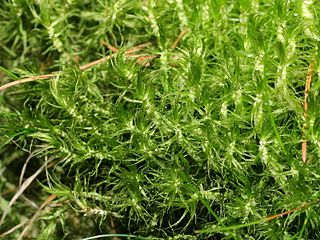
Dicranum is a genus of mosses, also called wind-blown mosses or fork mosses. These mosses form in densely packed clumps. Stems may fork, but do not branch. In general, upright stems will be single but packed together. Dicranum is distributed globally. In North America these are commonly found in Jack pine or Red pine stands.

Gymnostomum is a genus of bryophyte in family Pottiaceae. It was first described by Christian Gottfried Daniel Nees von Esenbeck and Christian Friedrich Hornschuch

Grimmia is a genus of mosses (Bryophyta), originally named by Jakob Friedrich Ehrhart in honour of Johann Friedrich Carl Grimm, a physician and botanist from Gotha, Germany.

The Guébriant Islands are two islands west of the Antarctic Peninsula, in the northern part of Marguerite Bay, lying 9.3 kilometres (5 nmi) southeast of Cape Alexandra, the southeast cape of Adelaide Island. They were discovered by the fourth French Antarctic Expedition 1908–1910 under Jean-Baptiste Charcot and named by him as "Îlots de Guébriant" after the Reverend Jean Budes de Guébriant, a French Catholic missionary to China.

Barbula is a genus of mosses in the family Pottiaceae.

Schistidium is a plant genus in the moss family Grimmiaceae.
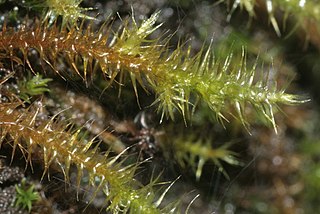
Amblystegiaceae is a family of mosses. It includes 20 to 30 genera with a total of up to 150 species. They occur nearly worldwide, growing in tropical, temperate, and subpolar regions.
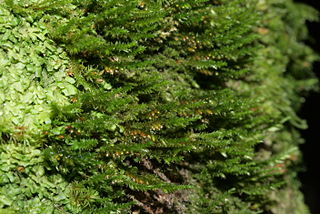
Cryphaea is a genus of mosses, (Bryophyta), containing at least 26 accepted species.

Cryphaeaceae is a family of mosses (Bryophyta).

Thuidium is a genus of moss in the family Thuidiaceae. The name comes from the genus Thuja and the Latin suffix -idium, meaning diminutive. This is due to its resemblance to small cedar trees.

Pohlia is a genus of mosses in the family Mniaceae, found on all continents including Antarctica. Some of its species are native to multiple continents. The center of diversity is the Northern Hemisphere.

Syntrichia is a large, cosmopolitan genus of mosses in the family Pottiaceae. The genus name is of Greek origin for "plus" and "hair", referring to the "twisted peristome united by a basal membrane".

Neckera is a large genus of mosses belonging to the family Neckeraceae. The genus was first described by Johann Hedwig. The genus has a cosmopolitan distribution.

Rhynchostegium is a genus of pleurocarpous mosses belonging to the family Brachytheciaceae. The genus has a cosmopolitan distribution across different climatological regions except the polar regions, mostly in tropic to north temperate regions. The genus contains both aquatic and terrestrial species. The genus was named for their rostrate opercula. The type species of this genus is Rhynchostegium confertum (Dicks.) Schimp.

Climacium is a genus of mosses belonging to the family Climaciaceae. The species of this genus are found in Eurasia, North America, and Australia.
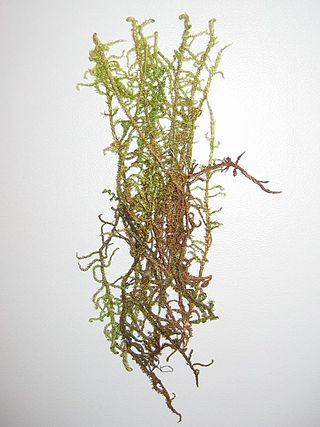
Drepanocladus is a genus of mosses belonging to the family Amblystegiaceae. It has a cosmopolitan distribution
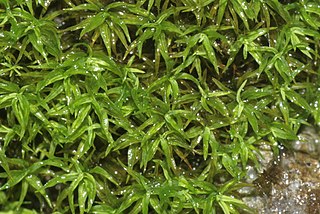
Trichostomum is a genus of mosses belonging to the family Pottiaceae.
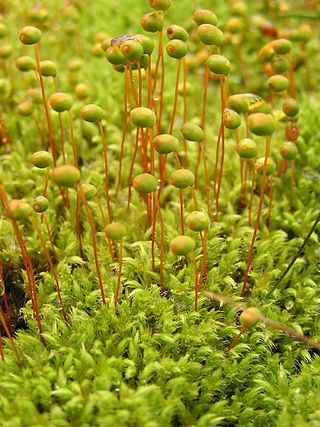
Bartramiaceae is a family of mosses belonging to the order Bartramiales.

Meesiaceae is a family of mosses belonging to the order Splachnales.



















